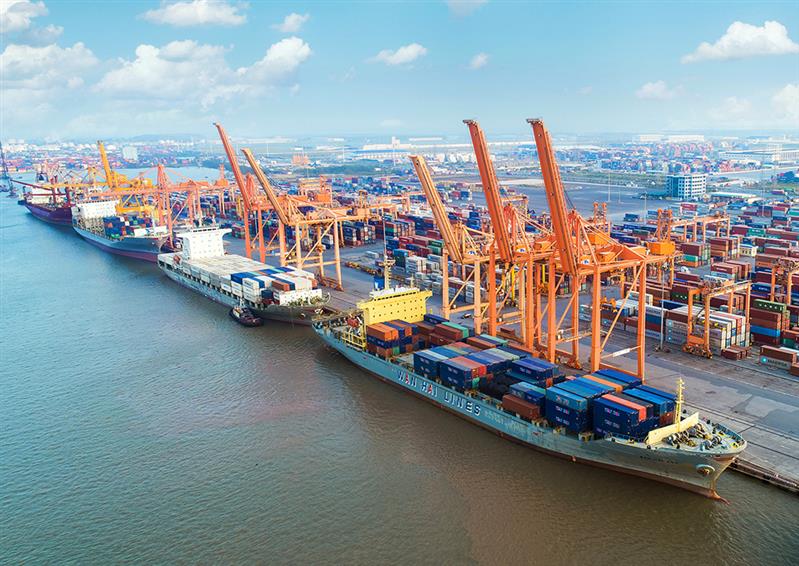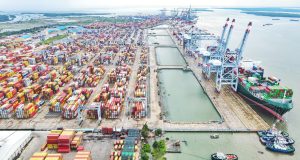After completing its equitization under a new trading name on August 18, 2020, the Vietnam Maritime Corporation (VIMC) has become the leading enterprise in Vietnam’s maritime sector. VIMC currently holds controlling shares in 19 subsidiaries and has contributed capital to 15 affiliated companies. It manages and exploits more than 13,000 meters of wharves (accounting for nearly 25 percent of the total length of national wharves). It has clearance capacity of more than 150 million tonnes of goods (more than 20 percent of the capacity in the country) at key seaports such as Hai Phong, Saigon, Da Nang and Quy Nhon.
The switch to a joint stock model was an important step for VIMC, helping increase resources of the parent company, improve service quality and competitiveness at international level, and secure its targets.
According to General Director of VIMC Nguyen Canh Tinh, in the first year of operation under the new model, VIMC faced many challenges due to the impact of the Covid-19 pandemic. Since the beginning of 2020, trade and travel activities around the world have shrunk greatly, resulting in a sharp drop of shipping, and a dramatic fall in the revenues of shipping fleets. However, VIMC’s 2020 results reflected the positive response it initiated. Specifically, the total output of the seaport segment reached more than 110 million tonnes with pre-tax profit of more than VND1.4 trillion, up 9.8 percent compared to the plan, and profit of the maritime services segment reached more than VND1.7 trillion, exceeding the plan by 12 percent.
In the first half of 2021, VIMC’s sea freight volume is expected to reach 12.1 million tonnes, while the volume of cargo handled through the ports is estimated at 68 million tonnes. Consolidated revenue is expected to reach more than VND5.9 trillion, and consolidated pre-tax profit is expected at VND951.14 billion.
General Director Nguyen Canh Tinh stated that apart from promoting the shipping business, seaports, and marine services, VIMC completed procedures that made it a large-scale public company with more than 1.2 billion shares traded on the stock market, facilitating mobilization of capital from domestic and foreign resources.
Seaport services make up for shipping loss
Cargo discharged at Quy Nhon Port
After equitization, the seaport services yielded a profit of more than VND1 trillion per year, making up for the drop in shipping activities. This is an attractive selling point for investors seeking to buy shares in the parent company.
Take the achievements by one of VIMC’s member enterprises – Quy Nhon Port JSC in Binh Dinh Province, for example. In 2019, the first year after being taken over by VIMC, the volume of cargo through Quy Nhon Port increased by more than nine percent compared to 2018 to 9.1 million tonnes. The 2020 profit of Quy Nhon Port reached VND146 billion (up 21 percent compared to 2018) while the owner’s equity was only VND404 billion. Quy Nhon Port is also one of the most efficient seaports with an 820-meter wharf and 2020 cargo handling capacity of up to 12,500 tonnes per meter – five times higher than the design capacity.
In 2020, Quy Nhon Port also opened a direct transport service route to northeast Asian countries in order to transport goods from the Central Highlands to the Republic of Korea, Japan and China. An average frequency of one shipment per week contributed to the import and export turnover of more than US$1 billion of Binh Dinh Province in 2020.
Vietnam’s economy is experiencing negative impacts due to the Covid-19 pandemic. However, economic experts predict that the strong expansion of businesses in the field of commodity production during the domestic and global post-pandemic recovery will help VIMC’s shipping, seaport and logistics services in the future.










